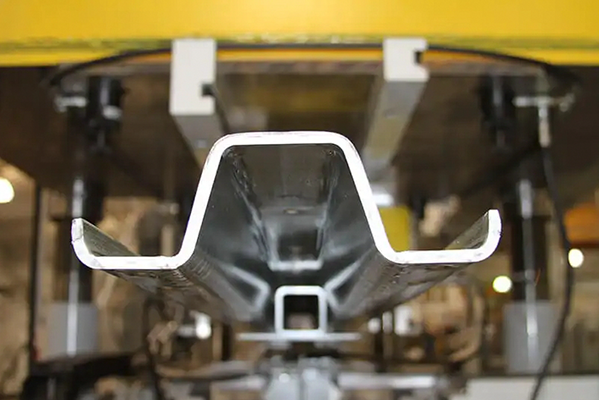Navigation Menu
Contact Us
- Email:
- info@wxavatar.com
- Address:
- Yurong Village, Yuqi Street, Huishan District, Wuxi, China.
Release Date:Jun 07, 2025 Visit:64 Source:Roll Forming Machine Factory
Managing the fluctuating costs of raw materials is a critical challenge for roll forming manufacturers. Given that metal, a primary raw material, often constitutes a significant portion of the total production cost, its price volatility directly impacts a company's profitability. Therefore, effective cost management becomes a core operational imperative.

Here are some key strategies roll forming manufacturers employ to address raw material cost fluctuations:
Optimizing Procurement Strategies
Diversify the Supply Base: Relying on a single supplier can be risky. Establishing relationships with multiple suppliers allows manufacturers to obtain more competitive quotes and provides alternatives if one supplier faces issues or raises prices, thereby mitigating procurement risks.
Enter into Long-Term Contracts: When market prices are stable or expected to rise, manufacturers can sign long-term contracts with suppliers that lock in prices or establish a pricing formula. This provides predictability for raw material costs over a set period, guarding against drastic short-term price swings.
Strategic Purchasing and Inventory Management: Closely monitoring market trends and commodity price indices is crucial for accurate demand forecasting. When raw material prices are low, moderately increasing inventory can reduce the average procurement cost. However, this must be balanced against storage costs and capital tie-up. While Just-In-Time (JIT) inventory can reduce holding costs, it might present challenges during price escalation cycles, necessitating flexible adjustments.
Strengthen Supplier Relationships: Building transparent and trusting relationships with core suppliers is vital. Good communication helps manufacturers receive timely information about price adjustments during market changes and negotiate more favorable terms.
Enhancing Production Efficiency
Implement Lean Manufacturing Practices: Adopting Lean principles aims to identify and eliminate various forms of waste in the production process, such as material waste, overproduction, and waiting times. By optimizing workflows and reducing scrap, manufacturers directly cut down on per-unit raw material consumption.
Process Optimization and Design Changes: Thoroughly analyze existing product designs and manufacturing processes. Explore using different material specifications or thicknesses, or optimize structural designs to reduce the required material volume. Look for lower-cost material alternatives without compromising product function and quality.
Boost Equipment Utilization and Speed: Roll forming equipment setup times and operating speeds significantly influence costs. Optimizing die designs, reducing changeover times, and running machinery at faster speeds can increase output, spread fixed costs over more units, and indirectly lower the raw material's proportion of the total cost.
Reinforce Quality Control: Reducing defects and rework during production directly minimizes material waste. Investing in robust quality management ensures products meet specifications the first time, avoiding additional material consumption.
Internal Cost Control and Risk Management
Transparent Cost Breakdown: Clearly understand the true cost of raw materials in a product, including procurement price, transportation, processing, and storage. This empowers manufacturers to make more informed decisions regarding pricing and cost control.
Cost Pass-Through and Price Adjustments: In scenarios of sustained raw material cost increases, manufacturers may need to adjust product selling prices to pass on some of the increased costs to customers. This requires thorough communication with clients, explaining the reasons for price adjustments, and offering competitive value.
Financial Risk Management: Consider using financial instruments, such as hedging, to mitigate the risk of raw material price volatility. This is particularly relevant for large-volume raw material purchases with predictable needs.
Cultivate a Culture of Continuous Improvement: Foster an internal culture where employees are encouraged to suggest ideas for cost reduction and efficiency improvements. Regularly review and assess all operating costs to identify new optimization opportunities.

By implementing these multifaceted strategies, roll forming manufacturers can more effectively navigate the challenges posed by fluctuating raw material costs, maintain stable operations, and deliver competitive products to their customers. This is a dynamic management process that requires continuous attention to market changes and flexible adaptation of strategies.